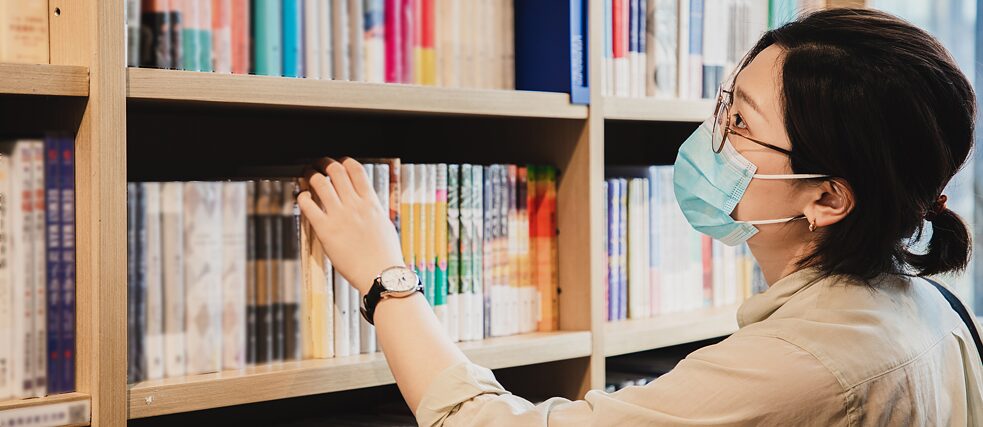From participant limitation to WhatsApp friendships
Pre-integration work in times of COVID-19

The corona pandemic characterises people’s day-to-day life all over the world. What that means in specific terms for pre-integration work varies depending on location and region.
By Janna Degener-Storr
Washing hands, wearing masks, social distancing and developing digital interaction – hygiene rules and contact bans were no longer a novelty for project co-workers and participants in the regions of North Africa / Middle East and South America by the time the locations joining the project in the current phase began their pre-integration work. Colleagues in South-East Europe and South-East Asia on the other hand, who had been involved longer, had to adapt their programmes quickly to pandemic conditions in spring 2020.
One example of how learning from home was made easier for participants was the development of the online course “Mein Deutschlandkurs” earlier than originally planned. And suddenly it was no longer possible to deliver many of the programmes in a face-to-face setting, so they had to be converted into online formats instead. This certainly provided benefits with regard to coverage. “At most sites we can also use digital programmes to reach target groups outside the cities, which is where the Goethe-Institutes are usually located,” stresses Andrea Hammann, project co-ordinator at the Goethe-Institut head office. So digital programmes improve access to pre-integration, at least for participants with the necessary media skills. This follows an action recommendation made in the study Approaches that begin at home, which was conducted in the last project phase. Online programmes are therefore highly beneficial to the goals of the project – and they have now become a matter of course everywhere.
Turkey: pros in the digital space
Gülseren Güleryüz from the Goethe-Institut Istanbul for instance is observing a new normality and professionality in the way people approach digital learning. “The seminar leaders have become more perceptive and are now better at interpreting the silence that sometimes occurs during video conferences.” Participants are also more self-directed now, she says. “They maintain more intensive WhatsApp contact. When they then meet each other for the first time in person at the Goethe-Institut language exams, they often have the feeling that they are already close friends anyway.” Furthermore, the project team member adds with a wink, it’s become normal for everyone to work in jogging bottoms. “We’re also enjoying putting on lipstick for the camera now, to improve focus on what we say and so our facial expressions aren’t kept hidden behind the mask.”Serbia: virtual programmes are becoming increasingly popular
In Serbia participants seem to have grown so used to the digital programmes that face-to-face provision, which is possible again here, is now less well received. Project coordinator Dr. Nemanja Vlajkovic can only speculate as to the reasons: “We’re constantly being asked about online programmes now. Maybe it’s because people have become more comfortable. Maybe some of them are also afraid of being infected by the virus. In any case we view it as a problem, because in our experience certain interaction formats work better in the classroom, and also because many people who register for online programmes don’t turn up after all, which makes planning more difficult.”Far East: new normality in pandemic times
The pandemic is posing new challenges for face-to-face programmes in Thailand as well. The trouble is that participants now have to register for events online to ensure that space can be utilised optimally and social distancing is maintained. That can represent an obstacle, especially for participants who are unaccustomed to learning and not very technically minded. Felix Warneke of the Goethe-Institut Bangkok has experienced this situation many times: “Some people find it unsettling when they scan a QR code and instead of opening Messenger as usual, an unfamiliar email app opens – and on top of that it’s restricted to written communication. But fortunately since the contact restrictions have largely been relaxed and face-to-face programmes have resumed, we are able to help people with these steps in person again.”In Vietnam on the other hand face-to-face events are now almost running as usual again, while some of the online programmes developed during lockdown are continuing as a supplementary provision. “We’re now deciding according to need whether a service is offered face-to-face or digitally,” explains project coordinator Huong Thanh Nguyen, and gives two examples: “The exam preparations only last two hours and are still offered as an online programme, because we can reach more participants on the internet. Intercultural communication training in contrast is more effective face-to-face, because it takes a whole day and involves a variety of exercises and games and we don’t want to expect participants to spend such a long time on a computer or phone.”
Working together across borders
So the conditions for pre-integration work vary depending on the continent, region and location. And yet everyone benefits from a mutual exchange of ideas, although that also has to take place online during the corona pandemic. Until they can get together in person again, the 47 members of the pre-integration team at the Goethe-Institut are now meeting every two weeks on the internet for an hour. Every time they come together, the team members at a location have the opportunity to present their work. Furthermore an in-service training seminar is planned in April, at which the Goethe-Institut would like to communicate a current image of the migration situation in Germany as impacted by COVID-19 to pre-integration project team members all over the world.Funded by:

